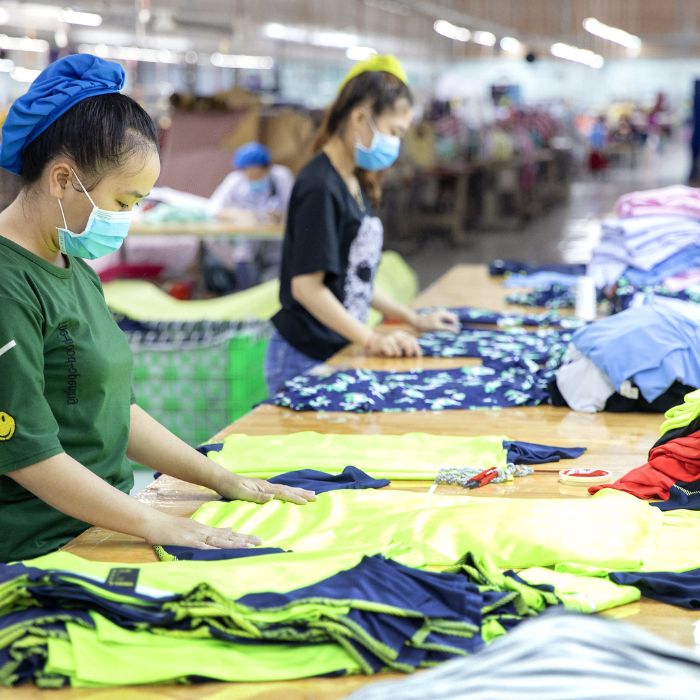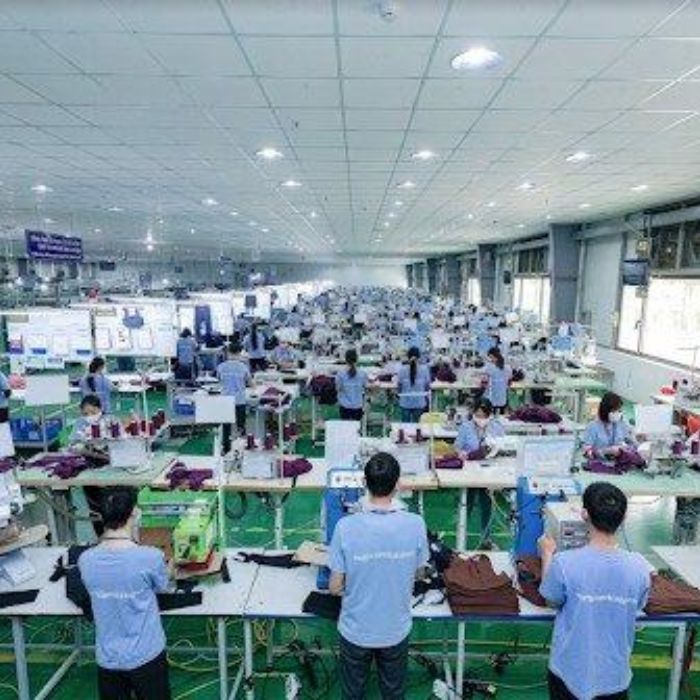As fashion enthusiasts, we have always been curious about the inner workings of garment factories. So when we had the opportunity to visit a Vietnam garment factory last month, we jumped at the chance. What we saw was both eye-opening and inspiring. Here’s what we learned.
Mục lục
Vietnam has become the top destination for clothing manufacturing for several reasons. Firstly, the country offers a competitive cost advantage over other manufacturing hubs such as China and India. Labor costs in Vietnam are lower than in many other countries, making it an attractive location for companies looking to cut costs.
Finally, Vietnam garment factory benefits from the country’s stable political environment. The government has implemented policies to encourage foreign investment and has worked to create a business-friendly environment. This has helped to attract investment from around the world, which has helped to fuel the growth of the country’s garment industry.
The workers were all equipped with protective gear, including gloves and masks, and the air was kept fresh with plenty of fans. It was evident that the management prioritized the safety and well-being of their employees.
The factory was equipped with modern and well-maintained machinery, which contributed to the efficiency of the production process. The environment was clean and organized, which made it easy for workers to navigate and perform their tasks effectively.
The Vietnam garment factory was certified by several international organizations for its ethical standards, which was a testament to the management’s commitment to fair labor practices.
There was no evidence of child labor or other unethical practices, which was reassuring. The factory’s commitment to ethical standards was further reinforced by its certification from international organizations. The workers were treated with respect and dignity, which was evident in the positive atmosphere and camaraderie among them.
See more about:
Useful facts about Vietnam wholesale market online
The ideal Vietnam jeans manufacturer for your company
The positive atmosphere in the Vietnam garment factory was palpable, and it was clear that the workers were treated with respect and dignity. This contributed to a sense of camaraderie among the workers, which was heartening to witness.

Positive atmosphere and camaraderie
The employees at the factory were hardworking and dedicated. They worked long hours, but they seemed happy and content. Many had been with the company for years and spoke highly of their employer.
There were men and women from various age groups and backgrounds. It was clear that the company valued inclusivity and equal opportunities. According to a recent study, diverse teams are more innovative and productive.
It was evident that the employees were loyal to the company. They spoke highly of their employer and seemed to enjoy their work genuinely. Research shows that companies with high employee satisfaction have lower turnover rates.
Despite the long hours, the employees seemed to have an excellent work-life balance. They were able to take breaks and had a positive attitude towards their work. Studies have shown that a good work-life balance increases productivity and job satisfaction.
The production process at the Vietnam garment factory was fascinating to watch. From cutting and sewing to finishing and packaging, every step was carefully executed by skilled workers. The attention to detail was impressive, and it was evident that quality was a top priority.
The Vietnam garment factory has implemented several sustainability initiatives to reduce their environmental impact. The factory had installed energy-efficient lighting and machinery, and they recycled all of their paper and cardboard waste. They also used eco-friendly materials whenever possible.
Throughout the production process, there were several quality control checks to ensure that each product met the factory’s high standards.
Each garment was inspected for defects or imperfections, and any issues were immediately addressed. The Vietnam garment factory also had a strict policy for ensuring that all products were ethically made.
The production process of Vietnam garment factory was a collaborative effort, with each worker playing a crucial role in the final product. There was a strong emphasis on teamwork and communication, with workers regularly checking in with each other to ensure that everything was running smoothly. This helped to minimize errors and ensure that each product was made efficiently and effectively.

Teamwork and communication in Vietnam garment factory
Many of the businesses were directly or indirectly linked to the garment industry. From fabric suppliers to transportation services, the Vietnam garment factory had created a ripple effect in the local economy.
The Vietnam garment factory provided several benefits to its employees and their families, including healthcare and education support. It was heartening to see how a single company could have such a positive impact on an entire community.
The community needed more access to clean water and sanitation facilities. Despite the positive impact of the factory, there were still areas that needed improvement.
According to a resident, the Vietnam garment factory has brought many benefits to our community, but we still face challenges in accessing necessities like clean water.
The Vietnam garment factory had implemented initiatives to address some of these challenges. For example, they installed water filtration systems in the community and provided training on proper sanitation practices.
Vietnam has become a significant player in the global garment industry over the past few decades. In 2021, the country exported $39 billion worth of clothing and textiles, making it one of the top textile exporters in the world.
Despite its success, the industry faces challenges, including rising labor costs and competition from other countries.
The country has a skilled workforce, ethical standards, and a commitment to sustainability, which positions it well to continue thriving in this sector. Vietnam’s garment industry has a skilled workforce, ethical standards, and a commitment to sustainability.
Furthermore, Vietnam has been investing in technology and innovation to improve efficiency and productivity in the industry. This investment will help the country stay competitive and adapt to changing market demands. Vietnam’s investment in technology and innovation will help the country stay competitive and adapt to changing market demands.
Several Vietnam garment factory have established themselves as top players in the industry. Here are a few examples:
These are just a few examples of the top Vietnam garment factory. It’s worth noting that many other factories in the country produce high-quality garments for domestic and international markets.
Conclusion
Vietnam garment factory has become the top destination for clothing manufacturing for several reasons. The country offers a competitive cost advantage, a skilled workforce, proximity to raw materials, a well-developed infrastructure, and a stable political environment. These factors have helped to attract investment from around the world and have made Vietnam a global leader in clothing manufacturing. As the country’s textile industry grows, Vietnam’s garment factories will likely continue to be a top destination for clothing manufacturing for many years.